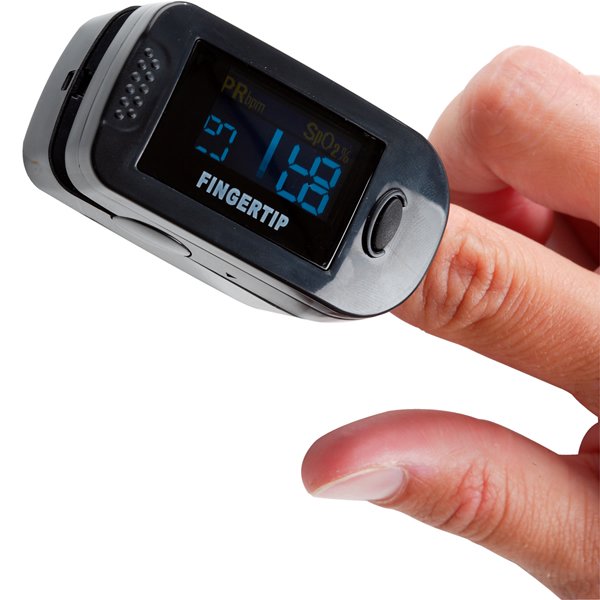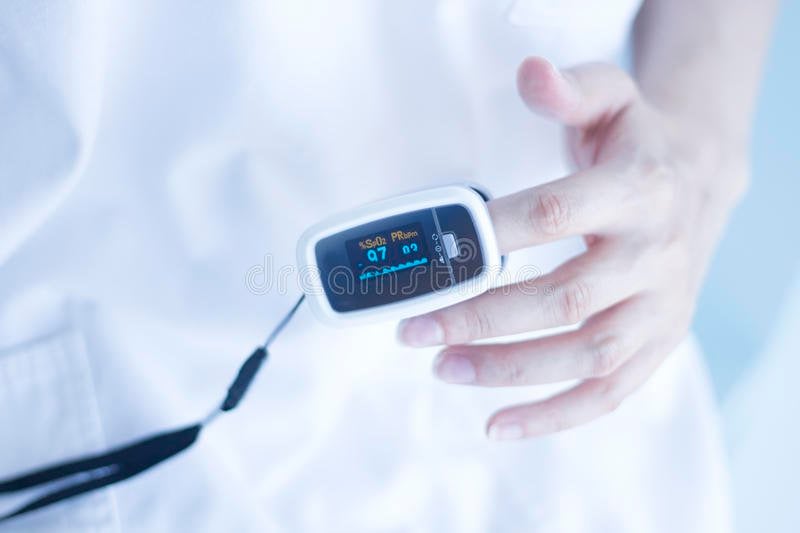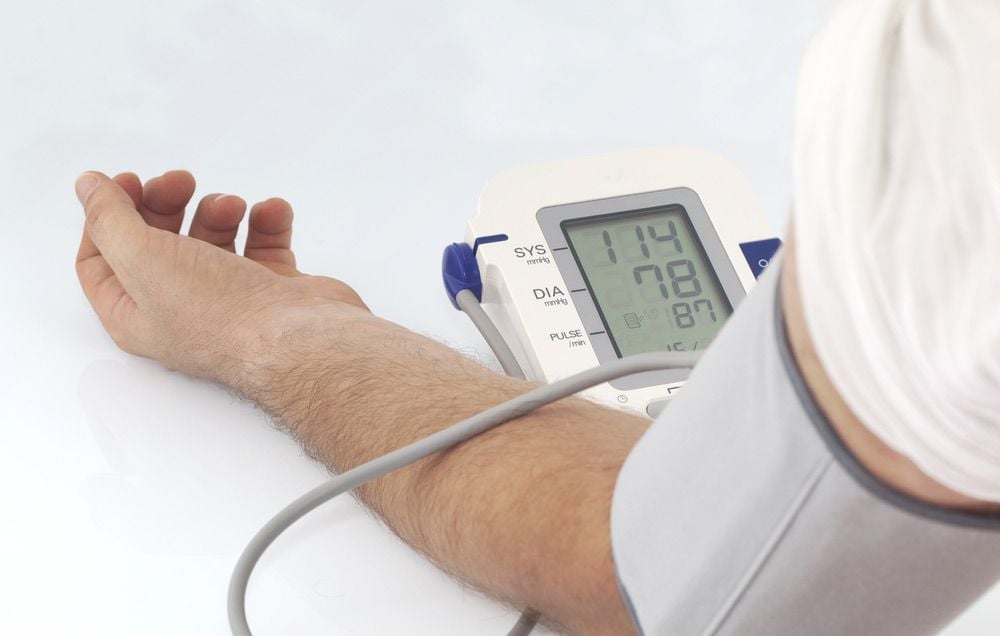Can A Blood Pressure Cuff Be Too Tight
The proper sizing of a blood pressure cuff or how its wrapped around the arm can drastically change blood pressure measurements. You may have wondered if wrapping the cuff too tight makes a difference. Therefore, lets answer the question, can a blood pressure cuff be too tight?
A blood pressure cuff is too tight if only one finger or less can be slipped between the cuff and the upper arm. A cuff secured too tight is caused using a cuff sized too small or a properly sized cuff pulled too tight. A cuff wrapped too tight can cause the BP measurement to be inaccurate.
Depending on the cause of the cuff being too tight, blood pressure measurements may be inaccurately high or low. This article will explain how each one of those false readings can occur. More importantly, Ill inform you how to prevent it from happening.
BP TIP: Lower BP by just breathing? A device is FDA approved and The American Heart Association gave it the thumbs up. It simply guides your breathing a few minutes a day which has been proven to lower BP in studies. Check it out in the manufacturers website by .
Disclaimer: Some links in this article are affiliate links which means I may earn a small commission at no extra cost to you.
Blood Pressure Monitoring At Home
Many people monitor their blood pressure at home. They often do this to manage or treat a certain health condition. If you monitor your blood pressure at home, keep a record, or log, of the measurements. The record shows your doctor how your blood pressure changes throughout the day. If you take medicines to control your blood pressure, it will help document if they are working. Measuring your blood pressure at home is a good way to take part in managing your health.
How To Use An Automated Blood Pressure Machine
The easiest way to take your own blood pressure is to purchase an automated cuff. Automatic blood pressure machines are the easiest to use, and theyre helpful if you have any hearing impairments.
These types of blood pressure cuffs have a digital monitor that will display your blood pressure reading on a screen. You can purchase these online, at most grocery stores, or at a health food store.
The American Heart Association recommends an automatic, upper arm blood pressure monitor for at-home use. To use your digital blood pressure monitor, follow the instructions that come with it. You can also take the monitor to your doctors office, or even your local pharmacy, for a demonstration.
You should also purchase a small notebook to start a blood pressure log. This can be helpful for your doctor. You can a free blood pressure log from the AHA.
Machines can give you a different reading than a manual blood pressure reading. Bring your cuff to your next doctors appointment so you can compare the reading from your cuff to the reading your doctor takes. This can help you calibrate your machine and identify levels you should look for on your own device.
Its also important to purchase a high-quality machine and monitor for errors. Even if you check your blood pressure at home, your doctor will still want to manually check it during appointments.
Also Check: Maxte Fitness And Activity Tracker Watch
How To Take Blood Pressure Manually
This article was co-authored by Michael Corsilles, ND. Dr. Corsilles is a Naturopath and a Physician Assistant in Washington. He completed his Naturopathic medical training at Bastyr University in 2003, and received his Physician Assistant certification from the University of Washington in 2010.There are 12 references cited in this article, which can be found at the bottom of the page.wikiHow marks an article as reader-approved once it receives enough positive feedback. This article has 15 testimonials from our readers, earning it our reader-approved status. This article has been viewed 555,860 times.
If you or someone you know is at risk for high or low blood pressure, you may want to invest in a manual blood pressure kit for home use. Learning how to take your blood pressure manually may take a little practice, but it is actually quite easy once you learn how. You’ll need to know what to wear, when to take your blood pressure, how to take it accurately, and how to interpret the results. With a little practice you’ll know how to find your systolic and diastolic pressure readings and what those numbers actually mean.
What Is The Best Way To Measure Blood Pressure

The most accurate way to measure blood pressure is using a sphygmomanometer and stethoscope. When you get your blood pressure measured at a medical office, your doctor uses a sphygmomanometer that includes a dial or column, pump, arm cuff, and stethoscope:
- The cuff is wrapped around your arm while your arm is kept at the same level as your heart.
- The pump tightens the cuff around your arm, putting pressure on the artery.
- Your doctor then releases the pressure and uses a stethoscope to measure your pulse rate.
- Your doctor records the pressure on the dial as your blood starts to flow back to your arm and checks two measurement points to determine your blood pressure reading.
Also Check: Does Claritin Raise Blood Pressure
A Correctly Sized Cuff Secured Too Tight
Assuming you have the proper sized cuff for your upper arm, its possible to secure it too tight or loose 1. The standard way to check if a cuff is secured properly is to slip your index and middle fingers under the lower edge of the cuff .
Therefore, lets answer the question, how tight should a blood pressure cuff get?
Only two fingers should be able to fit snugly between the cuff and the upper arm. If more than two fingers fit underneath the cuff, then it is too loose. If only one or no fingers can fit snugly underneath the cuff, its too tight.
How To Check Your Blood Pressure Manually
To manually take your blood pressure, youll need a blood pressure cuff with a squeezable balloon and an aneroid monitor, also known as a sphygmomanometer, and a stethoscope. An aneroid monitor is a number dial. If possible, enlist the help of a friend or family member, because it can be difficult to use this method on your own.
Here are the steps to taking your blood pressure at home:
Don’t Miss: Claritin And High Blood Pressure Medications
How To Check Your Blood Pressure Accurately At Home
How to use a home blood pressure monitor Be still. Dont smoke, drink caffeinated beverages or exercise within 30 minutes before measuring your blood pressure. Sit correctly. Sit with your back straight and supported . Measure at the same time every day. Take multiple readings and record the results . Dont take the measurement over clothes.
A Cuff Too Small Secured Tight
When a cuff is too small, its not long enough for the circumference of the upper arm. If its small enough, it may cause you to pull the cuff tighter than typical to secure the velcro so the cuff closes.
If the cuff is too tight, you wont be able to slip two fingers between the cuff and the upper arm.
A tight BP cuff is one of 14 sections in my article about blood pressure cuffs. Learn more about BP cuffs, including how to apply them, errors made and sizes, here in the article, Blood Pressure Cuffs.
Don’t Miss: Mayo Clinic High Blood Pressure Diet
Background And Objectives Of Finger Blood Pressure Monitor
Automated finger blood pressure devices are marketed to consumers as exact devices to monitor blood pressure. Our study compared the precision of those devices to plain vital sign cuffs. Center fingers are most frequently used but little research is available on inter-digit differences in pulse optometry measurements.
What Does Your Blood Pressure Reading Mean
If this is your first time taking your blood pressure, discuss the results with your doctor. Blood pressure is a very individualized vital sign reading, which means it can be very different for each person. Some people have naturally low blood pressure all the time, for example, while others may run on the higher side.
In general, a normal blood pressure is considered anything less than 120/80. Your own personal blood pressure will depend on your gender, age, weight, and any medical conditions you have. If you do register a blood pressure reading of 120/80 or over, wait two to five minutes and recheck.
If its still high, talk to your doctor to rule out hypertension. If your blood pressure ever goes over 180 systolic or over 120 diastolic after a repeat reading, seek emergency medical care right away.
Also Check: Does Claritin D Raise Blood Pressure
What Is The Best Blood Pressure Monitor
Getting a blood pressure monitor at home is an easy way to keep track of your numbers. Validated upper arm monitors that are fully automatic are the best choice for most people. There are many other options on the market.
Monitors that take the pressure from other parts of your body like your wrist or finger arent recommended as they are not as accurate.
Manual monitors also arent recommended unless you have special training.You can bring your monitor to your next doctor appointment to make sure it’s working correctly. You can always ask a pharmacist or your doctor if you have additional questions about the best blood pressure monitor for you.
The American Heart Association recommends regular home blood pressure monitoring for everyone with hypertension .
Can You Take Blood Pressure Manually On Yourself

The easiest way to take your own blood pressure is to purchase an automated cuff. Automatic blood pressure machines are the easiest to use, and theyre helpful if you have any hearing impairments. These types of blood pressure cuffs have a digital monitor that will display your blood pressure reading on a screen.
Don’t Miss: Blood Pressure Changes During Exercise
How To Interpret Your Blood Pressure Measurements
Your blood pressure measures how much pressure is going against your blood vessels as your heart beats.
The top number measures how much pressure is against your vessels when the heart is contracting. And the bottom number measures how much pressure is against your vessels when your heart is relaxing. Our blood pressure can change throughout the day. It often rises if we are feeling stressed, anxious, drink caffeine or have pain. These transient rises arent usually dangerous to us.
What matters most is what our blood pressure averages throughout the day.
So one high reading doesnt mean you necessarily have hypertension. This is why taking your pressures regularly and following the above 5 steps to getting an accurate reading is so important to discovering what your average blood pressure is.
Record Your Blood Pressure Numbers
To help you better manage your daily blood pressure readings, write down both your systolic and diastolic pressures and the date and time in a log. Organize your records so both you and your doctor can use them to treat and manage your condition. If a reading seems unusual, you may want to repeat it to be sure. Wait at least a minute, then take off the cuff and start over dont just reinflate it. Some doctors recommend taking two to three readings each time.
Read Also: Can I Take Claritin If I Have High Blood Pressure
Can You Check Your Own Blood Pressure Without A Monitor
Before Checking Your Blood Pressure Step-by-Step Blood Pressure Check You dont always have to go to your doctors office to have your blood pressure checked you can monitor your own blood pressure at home. This is especially important if your doctor recommends that you monitor your blood pressure on a regular basis.
Should You Be Checking Your Own Blood Pressure
Checking Your Blood Pressure at Home
- Tips for Checking Your Own Blood Pressure. There are certain factors that can cause blood pressure to temporarily rise.
- Before Checking Your Blood Pressure. Find a quiet place to check your blood pressure. You will need to listen for your
- Step-by-Step Blood Pressure Check. If you purchase a manual or digital blood pressure monitor
Read Also: Are Tomatoes Good For Blood Pressure
About Heart And Vascular Institute
The UPMC Heart and Vascular Institute has long been a leader in cardiovascular care, with a rich history in clinical research and innovation. As one of the first heart transplant centers in the country and as the developer of one of the first heart-assist devices, UPMC has contributed to advancing the field of cardiovascular medicine.
Tags
How Do You Check Your Blood Pressure With Your Fingers
Most doctors recommend the use of a blood pressure machine to check blood pressure. An individual may check heart rate with their fingers, but not blood pressure. Data shows checking blood pressure using fingers may not be accurate though there is an obscure method to correlate the pulse reading with systolic blood pressure. Blood pressure must be always measured using validated equipment.
Place the fingers on the inside of the wrist to locate the pulse. Now, take two fingers and place them just below the wrist creases on the thumb side of the hand. A strong pulse felt at the wrist correlates to the systolic blood pressure of at least 80 mmHg. This method is not always correct and hence not recommended.
It is important to use the correct technique to obtain an accurate measurement. Blood pressure is the force the blood exerts on the sides of the blood vessels as it moves ahead and is an important indicator of health. The pulse will give the basic information required to estimate the systolic blood pressure . Keep in mind this is a very rough estimate and only indicates if the systolic blood pressure is not low. Blood pressure monitoring should be done with a cuff and a stethoscope. However, recent advances in technology have made budget-friendly automatic blood pressure monitors easily available in pharmacies.
Also Check: Is High Blood Pressure A Symptom Of A Heart Attack
Finapres For Tracking Of Blood Pressure Responses
The availability of the continuous blood pressure signal enables the device to be used in situations where assessment of sudden transient changes in the circulation is the primary goal . At the time of introduction, the method was considered a major step in non-invasive cardiovascular monitoring and initial evaluation studies predominantly concerned anaesthetized patients in the operation theatre . Although the outcome of this initial work was promising, the use of finger arterial pressure in the operation theatre did not become routine practice . In recent years continuous finger blood pressure has established its place in the field of the investigation of patients suspected to suffer from autonomic dysregulation and syncope . Furthermore, the ability to relate beat-to-beat blood pressure with RR-interval provided an accurate way to investigate blood pressure variabilities .
When A Cuff Too Small Is Secured Too Tight How Does It Affect Blood Pressure

A BP cuff too small squeezing tightly increases BP. The cuff bladder doesnt wrap around the upper arm as much as it should, making it more difficult to block the flow of blood in the artery. When the air pressure is released, the systolic pressure signal starts earlier which results in a higher BP measurement.
The air bladder inside the cuff should be at least 75% of the arm circumference 4. If the bladder isnt long enough, it wont cut off the blood flow properly when the cuff is inflating with air. In addition, if the cuff is too short, it may cause you to pull the cuff tighter than it should to secure it properly.
In a study evaluating cuff positioning, comparisons were conducted using a cuff too small for the upper arm. When the smaller cuff was used, systolic pressure increased 4.9 mmHg and diastolic pressure 4.0 mmHg 5.
I have an article, Blood Pressure Cuff Too Small, which dives into detail about the cuff being too small. It also discusses how obese arms is a major cause and how to correct it.
Don’t Miss: Is Claritin Safe For High Blood Pressure
What Is A Finger Blood Pressure Monitor
A finger blood pressure monitor is a small electronic device designed for calculating blood pressure at home. Although most individuals will have their blood pressure checked during regular visits at their health care providers office, these visits may not provide enough information to determine if a course of treatment is working. A home blood pressure monitor, on the other hand, can be used to provide a detailed and accurate analysis of an individuals blood pressure over time.
Individuals who have hypertension may regularly use a home blood pressure monitor. A finger blood pressure monitor is also likely to be recommended for those with high blood pressure, low blood pressure, or coronary heart disease. Another group that might use blood pressure monitors are pregnant women, as the electronic devices can be operated daily to test blood pressure levels and quickly detect pregnancy-induced hypertension. As blood pressure rates also tend to vary among seniors, health care professionals might recommend regular monitoring at home for this group as well.